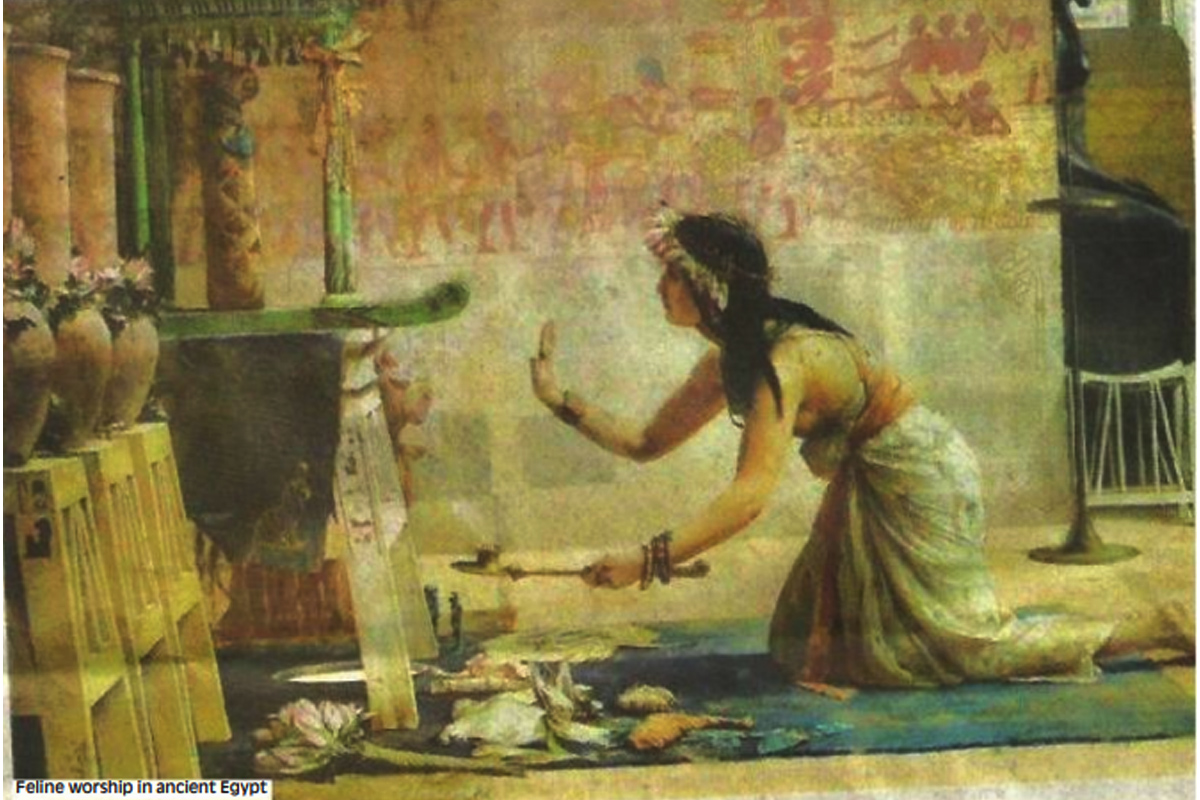An Egyptian priestess in Indian climes! That was Nazdika. The only other such priestess was the one whose 2,500 year-old mummy is preserved in the Albert Hall museum in Jaipur. Nazdika was born around the year 1840 and her great grandfather had been a secret priest of Isis, the Egyptian goddess, who was highly venerated, along with her son Osiris, the young god who rests in Amenti (Hades), much to the grief of his mother who awaits his resurrection as per celestial decree.
Nazdika’s family had ostensibly converted to Islam but the old religion was still deeply ingrained in it. At the age of 16 she left home to stay near the pyramids’ temple area of Abouthis, where she was initiated into the rites of the divine Sethi. That was before H Rider Haggard had written his famous books on the land of the Pharaohs. The pyramids brood in the day in the blazing light of the sun god Ra and come back to life at night, along with the Sphinx, the eternal guardian of Upper and Lower Egypt.
There were many mysterious sights that sometimes fascinated and sometimes terrified Nazdika. Strange sounds, nocturnal birds with wide black wings that cast sinister shadows, and the shades of the past High Priests coming from the underworld. Undaunted, Nazdika learnt the initial rites until she was kidnapped by a man besotted with her and taken away to Port Said, where she was forced to dance at the erotic temple dedicated to Cyprius.
The kidnapper was a member of the secret Egyptian Brotherhood waiting for the restoration of the discarded faith of the country, which had a Mamluk dynasty ruler, who was subservient to the Sultan of Turkey, the Khalifa of Islam, before the Saudis took over. Nazdika bore a son but he died in infancy. Soon after her abductor met a violent end and she was able to escape to Cairo. It was there that Nawab Ismail Khan of Datoli found her and brought her with him as the wet nurse of his son Faiyaz Khan, whose mother Bi Sahib could not lactate. He also brought an African woman, Mashruka, and her son Almas from the slave market at Mecca, where he had gone for Haj, though his regret was that he could not bring the father also as he had already been sold off to someone else.
The Nawab stayed both at Delhi and Agra, where his kothi was famous as “Faiyaz Manzil”, named as it was after his son, who studied along with Sarojini Naidu in England and later became Nawab and member of the Central Legislative Assembly as a Muslim League leader. Nazdika was alive then and known as Sabamma (mother of the family). She sat on a takhat (a roughly made divan) cross-legged, an ebony-complexioned slim woman with long black hair and sharp features, motionless like the Sphinx, whose miniature image was kept at her side. A bundle of ancient papyrus texts served as her pillow though she did not sleep much. She would offer namaz alright but after midnight, when the moon was up, she would recite the prayers she had learnt on the banks of Father Sihor (the Nile) and the hymn of Isis, the lament for Osiris, the betrayal of the land of Khem by Cleopatra, Queen of Upper and Lower Egypt, who had fallen in love with Antony, the great Roman general, and committed suicide following the death of her lover at the naval battle of Actium after his defeat by Caesar Augustus. Sheesh Khan, Nawab Ismail Khan’s nephew, got up one night to hear strange music from the skies and Nazdika intoning a prayer and bowing down with folded hands. He did not know it that time but later learnt that it was the Sistra symbol of Isis that emanated that weird sound. One day he said, “Sabamma, what was the ghostly music that I heard last full moon night? She told him what it was and asked him not to speak about it to anyone as it could bring a curse on a non-believer like him.
Nazdika was fond of dates, honey, pickled locusts, marsh melons, water melons and mangoes from Jangbaspur, near Bulandshar, where Qadri Begum, wife of Faiyaz Khan, had her ancestral estate. Nazdika kept water from the Nile in a bottle, which was replenished whenever someone went for Haj in the family. When she saw the Yamuna she remarked that it was not as big and wide as Father Sihor, nor were there as many boats on it, in which Misr’s fishermen sang at night with the moonlight reflecting the pyramids in the Nile. She ate fresh water fish from the Yamuna but longed for the ones back home which she sometimes got from returning Hajis.
Sabamma did not observe purdahnor did she fast during Ramzan because of her delicate health. The African servant, Mushruka was always at her beck and call. She massaged and bathed her, oiled her hair and served her meals but Sabamma never ever ate an egg as it is the symbol of god Osiris’s predicted resurrection. In summer she slept outdoors but in winter moved to an inside room, lying on the takhat, covered with a Persian rug, which was embossed with the figure of Tukenkhanam, the boy pharaoh whose mummy is now kept in an American museum despite frequent demands for its return by Egypt.
When she died at the age of 98, Nazdika was buried at the Karbala, near the Syedna at Agra, in a mud grave sans a tombstone not far from the grave of Ismail Khan, whose wife Bi Sahib, however, passed away in Mecca, where she had gone to secure the family property from encroachers. Fazlu Mian, her grandson, who died at Rawalpindi in 1995, used to say that on the night of Sabamma’s death he had heard the same ghostly music as was heard by Sheesh Khan, though he did not know that it was the Sistra of Isis bidding adieu to the expriestess of the trinity of the divine Sethi.











